Segovia, Spain is rich in both history and charm, enchanting visitors with its Roman aqueduct, fairytale Alcazar castle, Gothic cathedral, and cobbled streets. In fact, Segovia, is steeped in interesting facts and tales from the past.
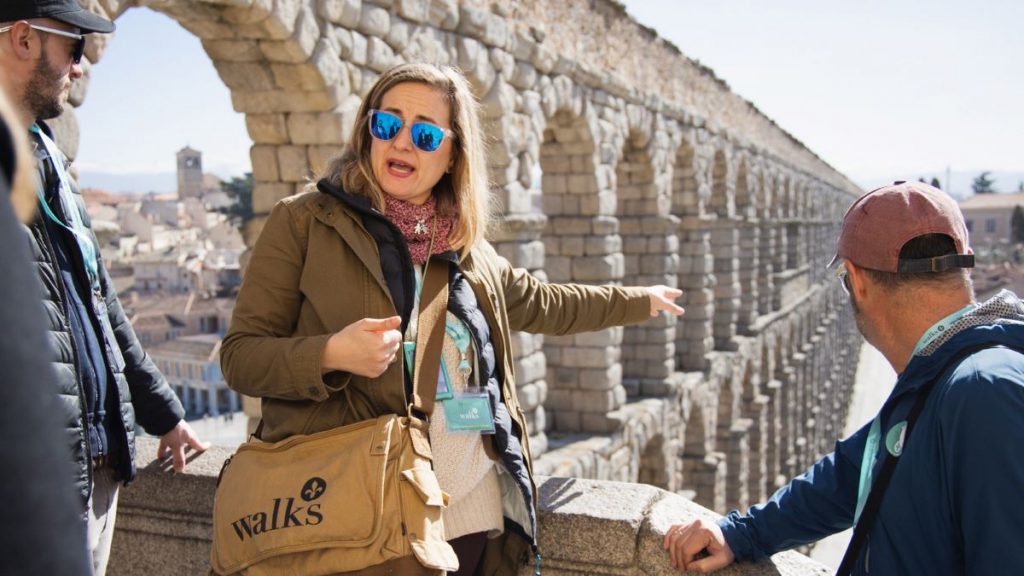
Did you know?
- The city’s iconic Roman aqueduct stretches 2,600 feet long and 93 feet in height. It was made without cement and is still standing today, almost untouched by time.
- Another legacy of the romans is Cochinillo asado, or roast suckling pig. This is the city’s most famous dish and evidence suggests it was brought here by the Romans and never left.
- Although there has apparently been some sort of military fort on this spot, the famed Alcazar of Segovia was first mentioned in records in the 12th century.
Indeed, it’s the bewitching Alcazar of Segovia that may have the most gravitational pull for you while you’re in this enchanting town.
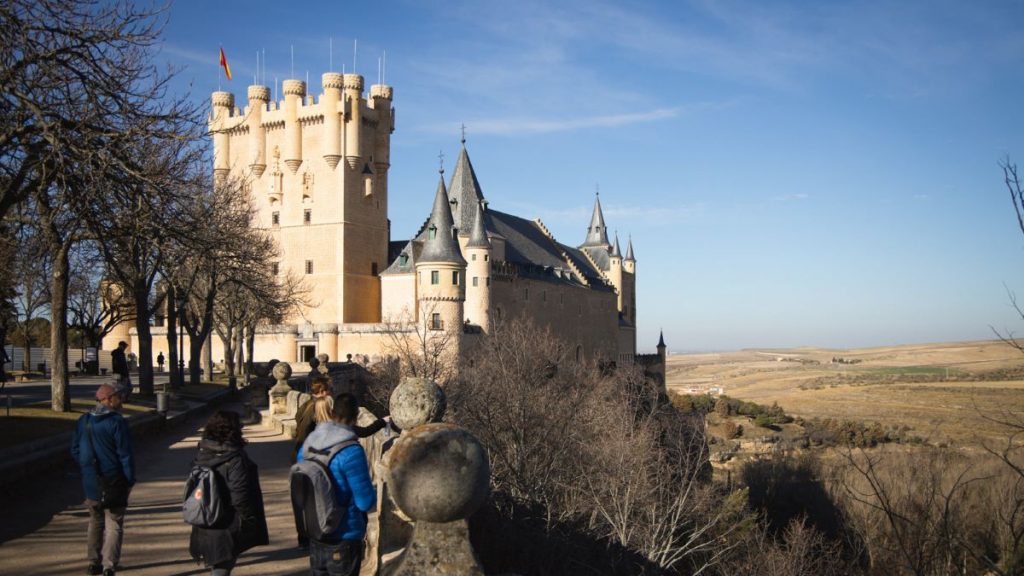
The Disney Castle?
The Alcazar of Segovia has many classic castle traits that we associate with fairy tales and Disney productions. The moat, the keep, the drawbridge, and the four spires all scream “Disney.” But was this the castle that inspired Sleeping Beauty’s castle or Cinderella’s fortress? After all, many people point to Neuschwanstein in Bavaria as the source of the castles at Disneyland in California and Disneyworld in Florida:
Well, for once, the correct answer is that both sides of the argument are right.
Cinderella’s castle and Sleeping Beauty’s castle were, in fact, inspired by a handful of medieval structures in Europe. In addition to the Alcazar of Segovia and Neuschwanstein in Bavaria, these include Hohenzollern Castle in Germany, Château d’Ussé in France, Craigievar Castle in Scotland, Moszna Castle in southwestern Poland, and the Tyn Church (Staroměstské nám) in Prague.
Appearances in Pop Culture
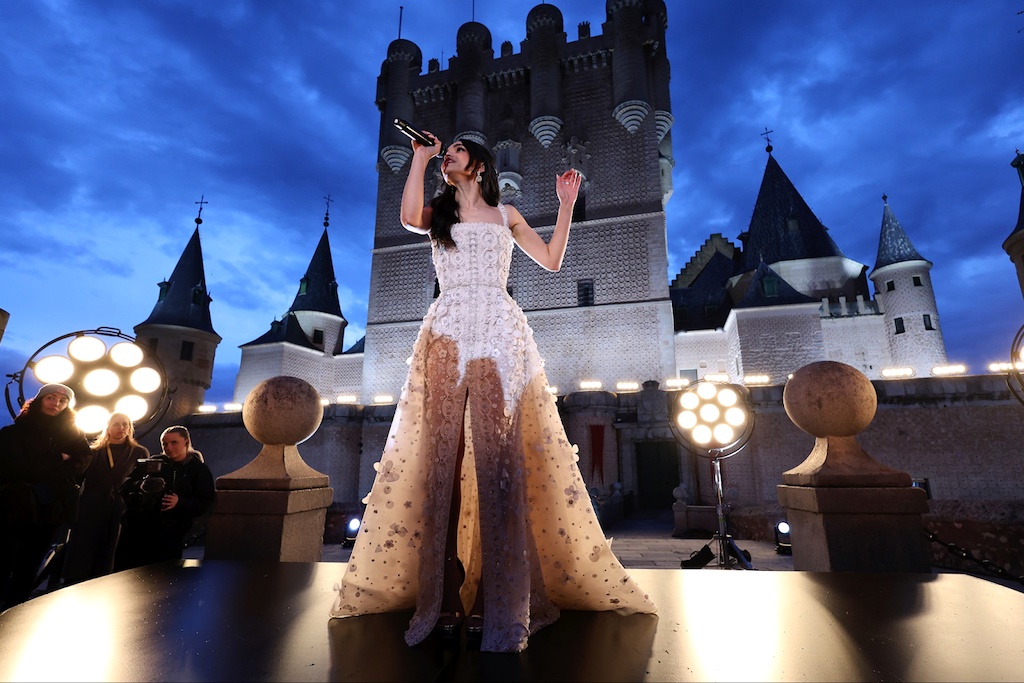
Indeed, the medieval Spanish castle was recently chosen by Disney as the location for the European premiere of the 2025 remake of the classic film “Snow White”. On March 12, 2025, Rachel Zegler performed “Waiting on a Wish,” at a special event with international press and fans, in attendance.
In other pop-culture-related news, the castle served as the setting for the 1965 Orson Welles’ film “Chimes at Midnight.” The castle was also used in the 1960 American film “The 3 Worlds of Gulliver,” serving as Brobdingnag. “The Wheel of Time,” a recent American fantasy TV series from 2021, also relied heavily on footage of the Alcazar.
From Roman Castrum to medieval castle
Sitting on a rocky crag on the western edge of the old town of Segovia, the Alcazar is one of the most imposing-looking structures in all of Europe. But, it didn’t always look this way. About 2,000 years ago, there was a castrum, or fort, that the Romans had built.
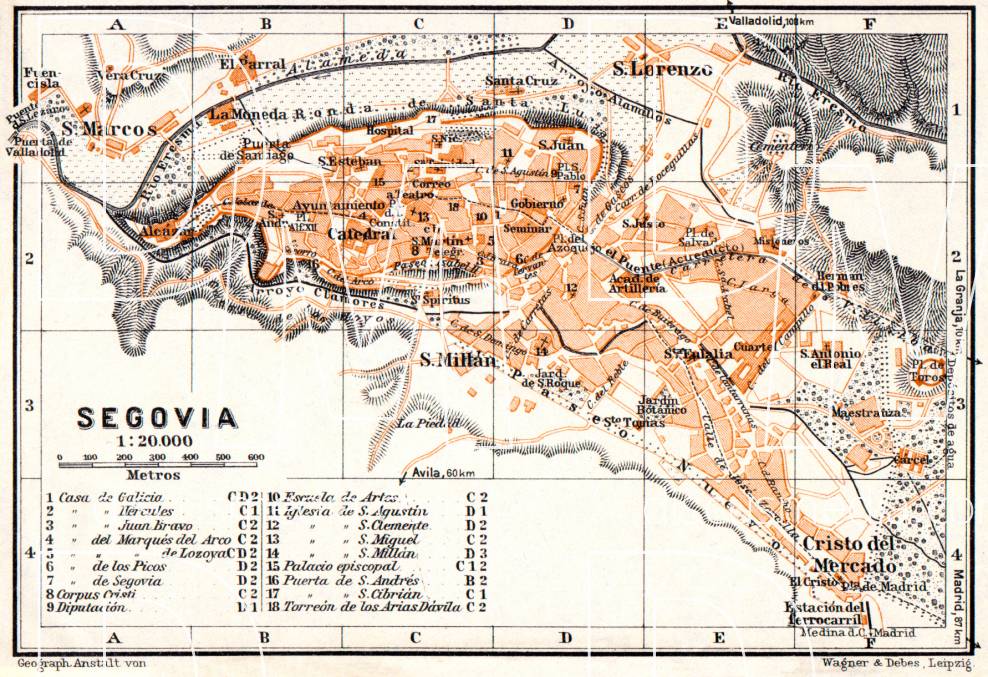
The History of the Alcazar
- The year 711 is an important one for Spain. That’s when the Moors, Muslim Arabs, crossed over from Northern Africa and began a centuries-long occupation of most of the Iberian peninsula. In the early centuries of Moorish rule, the Berber Almoravid Dynasty built a fortress in the spot where the Roman fort had been. The fort may have been made mostly of wood, which is why there are no remnants of it today.
- In the 12th century, Spanish-Christian King Alfonzo VI helped lead a reconquest, or Reconquista, of southern Spain. Segovia fell back under the Spanish monarchy again. It is in the centuries that followed when the Alcazar would start to take the iconic shape that you see today.
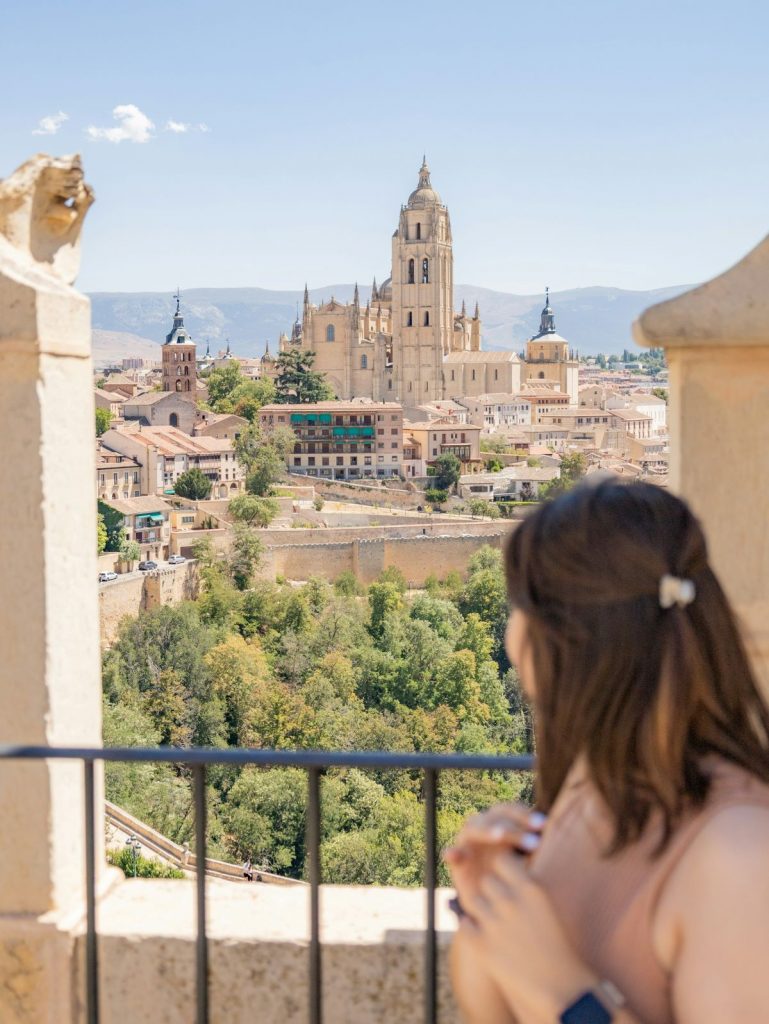
- In 1474, Queen Isabella I was crowned here as the Queen of Castile y Léon. Five years later, she would also become Queen of Aragon after she married King Ferdinand II. This united an enormous swath of Spain under one crown. Together, they were the first monarchs to be referred to as the “King and Queen of Spain” and were nicknamed the “Catholic Monarchs.”
- In the 16th century, under the rule of Phillip II and during his marriage to Anna of Austria, the castle acquired its tall spires. Phillip II was inspired by the many castles in Central Europe—particularly Germany, Austria, and Bohemia (the western half of today’s Czech Republic).
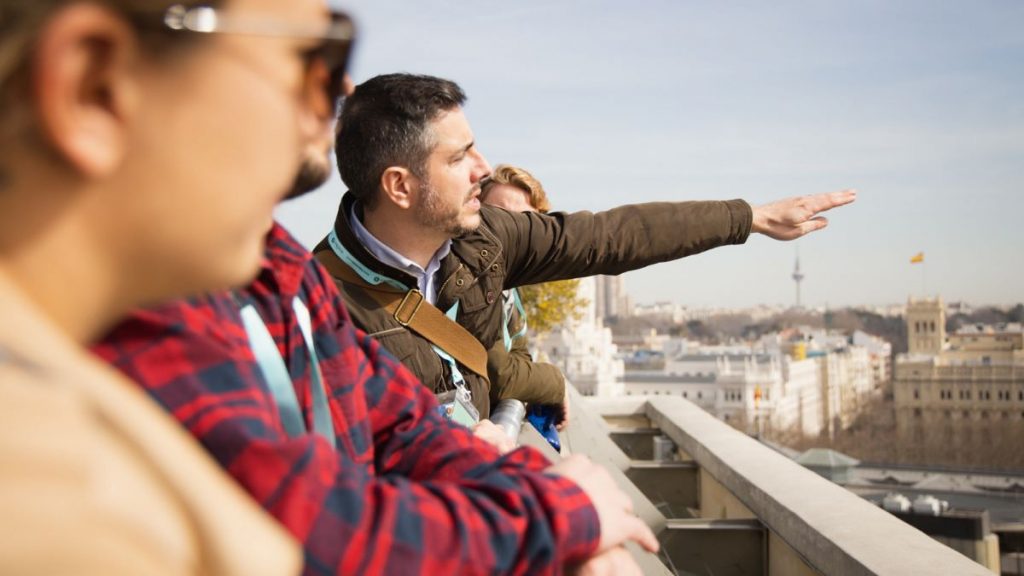
An insider’s view
If just gawking at this medieval fortress from afar or even upclose does not relieve your castle fix, you’re in luck: the palace interior is open for visits. The inside rooms of the Alcazar are splendid and exquisite. Crammed with elements of Mudéjar design — the style of Moorish Spain — they are similar to what you might see in the Alhambra in Granada and the Alcazar in Sevilla.
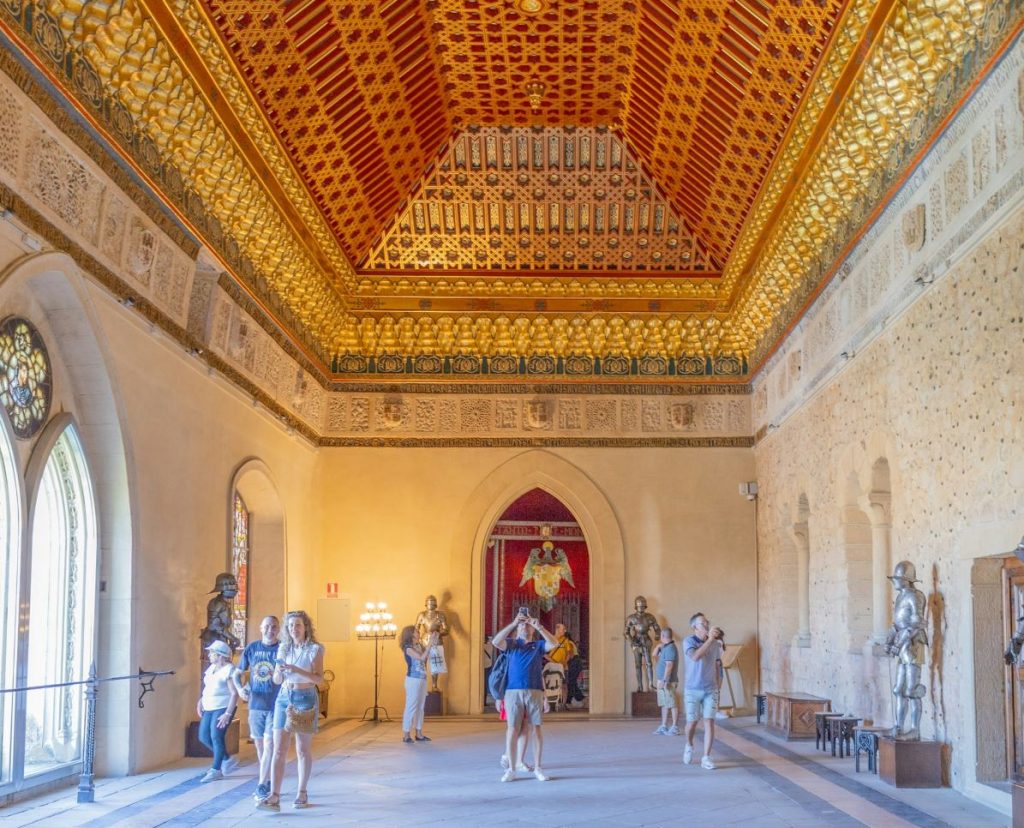
- In the magnificent Hall of the Fireplace, there are Flemish-style tapestries that show images of Philip II and Philip III. Most remarkable, though, is an image of the Alcazar before it got its “Disney-fied” look with turrets and spires. You can also see an image of the Segovia Cathedral and how it looked in the 16th century.
- There are paintings of all 52 kings who had ruled from the Alcazar in the baroque Hall of Kings. In addition, period furniture and portraits of Spanish monarchs fill the interior rooms, and the Alcazar is also home to enough weapons and medieval armor to start a crusade.
- Once last tip: Don´t forget to look up at the plus-sized stained glass windows, and ornate ceilings. And once you reach the Patio de Pozo, gaze out at the jaw-dropping view of Segovia and the surrounding countryside.
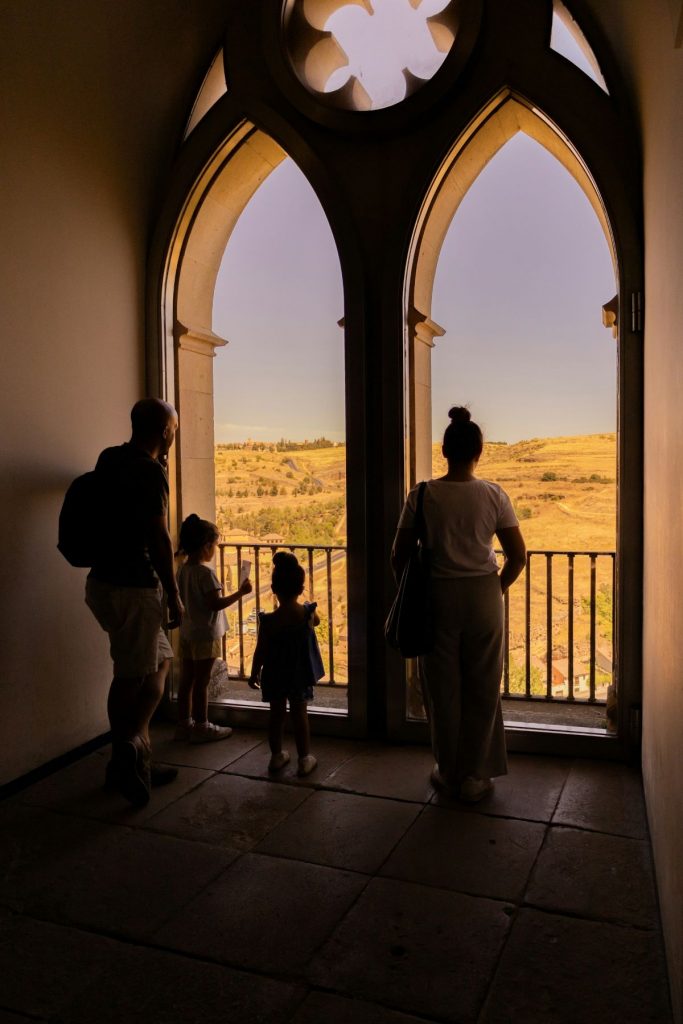
FAQ´s – Visiting Segovia´s Alcazar
How do I get to Segovia from Madrid?
Segovia is about 90km from Madrid, and it takes just over an hour by car, train or bus to get there from the capital. Buses run regularly to the centre of Segovia from Moncloa station, taking around 1 hour and 20 minutes. With trains from Madrid also taking about an hour—give or take 10 or 15 minutes, depending on which train you take and which Madrid train station is is departing from—it’s very easy to travel to Segovia.
Take note: The fastest option is the high-speed AVE train from Madrid Chamartín station, which takes about 30 minutes to the outskirts (Segovia Guiomar), but from there you will need to use local transport to get to the centre, unless you want to do a 5km walk.
How much does it cost to enter the Alcázar?
A full ticket (castle + museum + tower) costs around €10. Reduced tickets (for children, students, seniors) are about €7. For just the palace and museum (excluding the tower), it’s about €5.50, and the tower access alone is about €2.50.
At the Alcázar, free entry for EU residents is offered on Tuesdays from 14:00 to 16:00 (not on national or local holidays), only at the ticket office.
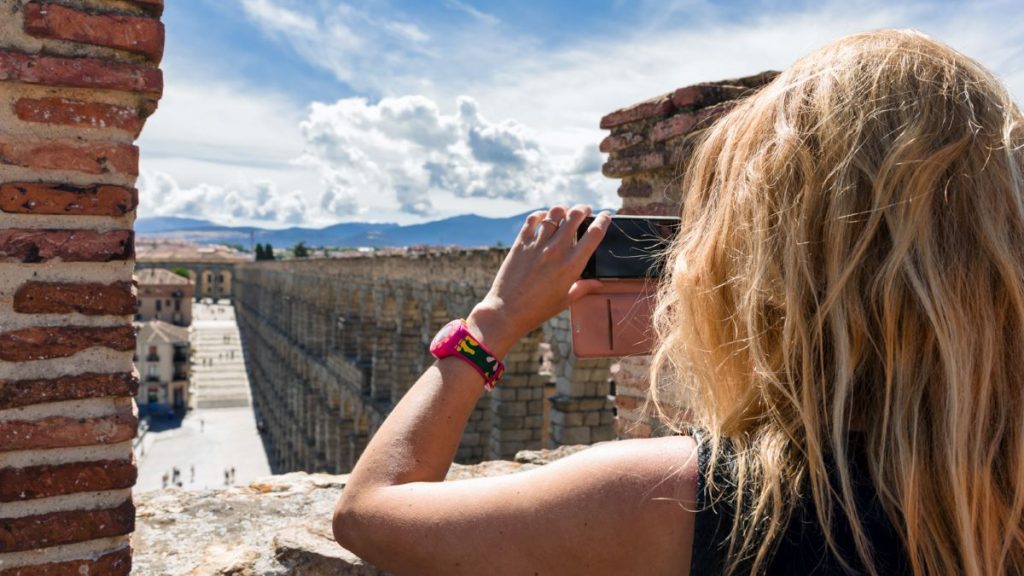
Make the most of your time by pairing a day trip to Segovia with our 3 in 1 Madrid Tour. From the fairytale Alcázar to Madrid’s grand royal residence, you’ll uncover centuries of Spanish history and monarchy.
